When Columbus sailed his way onto the school curriculum in 1492, the Canary Islands became the stepping stone between Europe and the New World, opening the portal for trade in everything from humans to spices. In the heady centuries of exploration and discovery that followed, Europe developed a passion for all things exotic, not least, the amazing plant life that thrived in tropical climes.
The first steps in this global early Interflora service were inevitably the Canaries where trees and plants were unloaded and left to acclimatise before onward travel to northern Europe ““ with mixed success.
But there was nothing hit and miss about the acclimatisation process; bathed in the sun and winter rainfall of Northern Tenerife, the plants flourished and made themselves at home.
Tenerife is still home to those exotic species from across the globe which grace gardens, plazas and roadsides across the island.
These are just a few.
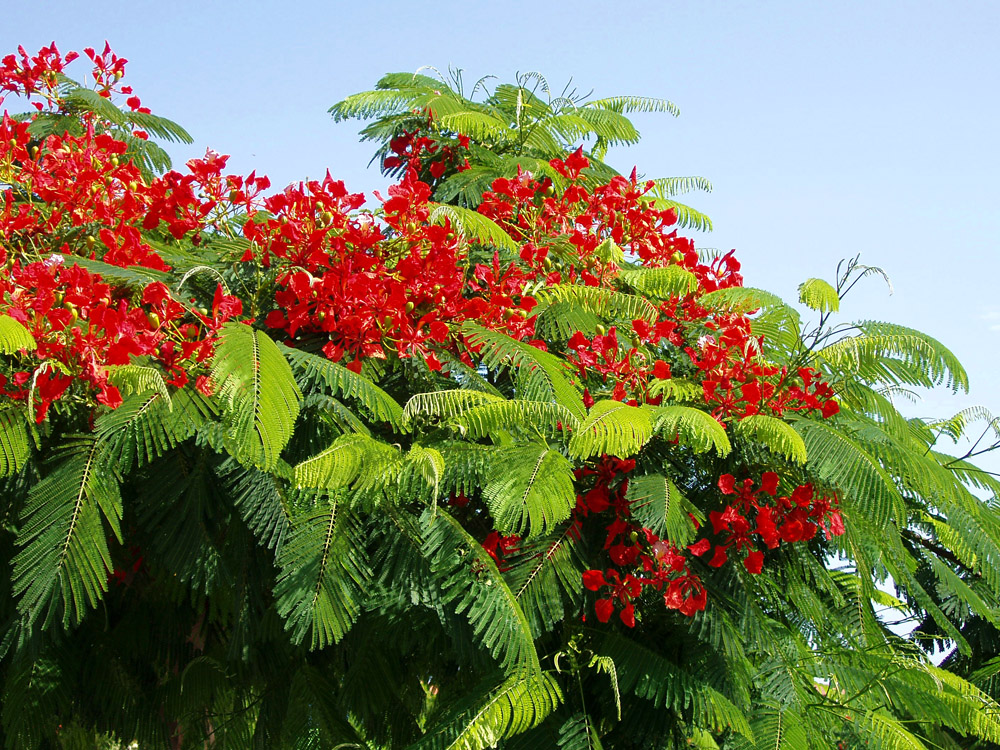 Flame of the Forest/Flambouyant (Royal Poinciana/Delonix Regia)
Flame of the Forest/Flambouyant (Royal Poinciana/Delonix Regia)
Consistently voted among the top 5 most beautiful flowering trees in the world, this native of Madagascar is covered in passionate clusters of flame-red flowers during spring and summer and turns the plainest of streets into prize winners. Royal Poinciana grows to 10 ““ 12 metres with an elegant, umbrella-like canopy of lacy leaves. Here in the Canaries the flat, woody pods it produces are sometimes used as simple musical instruments during fiestas, shaken to produce a tambourine-like rattle; the La Orotava RomerÃa is one place you’ll see them used in this way.
Jacaranda (Mimosifolia)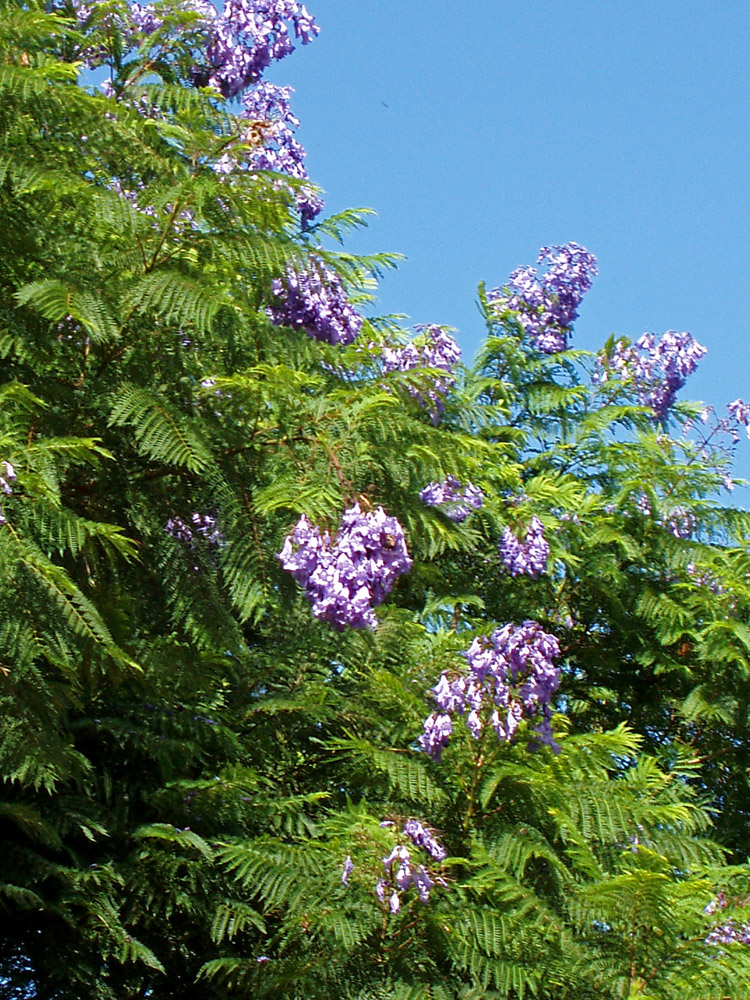
Native to Brazil, Argentina and Uruguay, the Jacaranda reaches heights of up to 15 metres. From April to June the tree covers itself in intense blue/violet clusters of flowers at the tip of its bare branches which, when they fall, create beautiful carpets of vibrant colour, like in the Plaza at Icod de los Vinos and beneath the bamboo tunnel in Parque GarcÃa Sanabria in Santa Cruz. As summer progresses, fern-like leaves appear and in August and September the tree gives a second flowering, this time on leafy branches. The scented wood of the jacaranda is prized as ornamental rosewood for cabinet making.
 Tulip Tree (Spathodea Campanulata)
Tulip Tree (Spathodea Campanulata)
Native to Tropical Africa, this beauty is also known as the fountain tree because, before they open, the flowers are filled with water. Wild canaries pierce the buds of the trees and drink the water. The tree can grow to 24 metres and has glossy, deep green leaves and glorious, tulip-shaped orange scarlet flowers. In Africa and Haiti, the flowers are thought to have magical properties and the wood is used for witch doctors’ wands.
Angel’s Trumpet (Brugmansia/Datura Versicolor)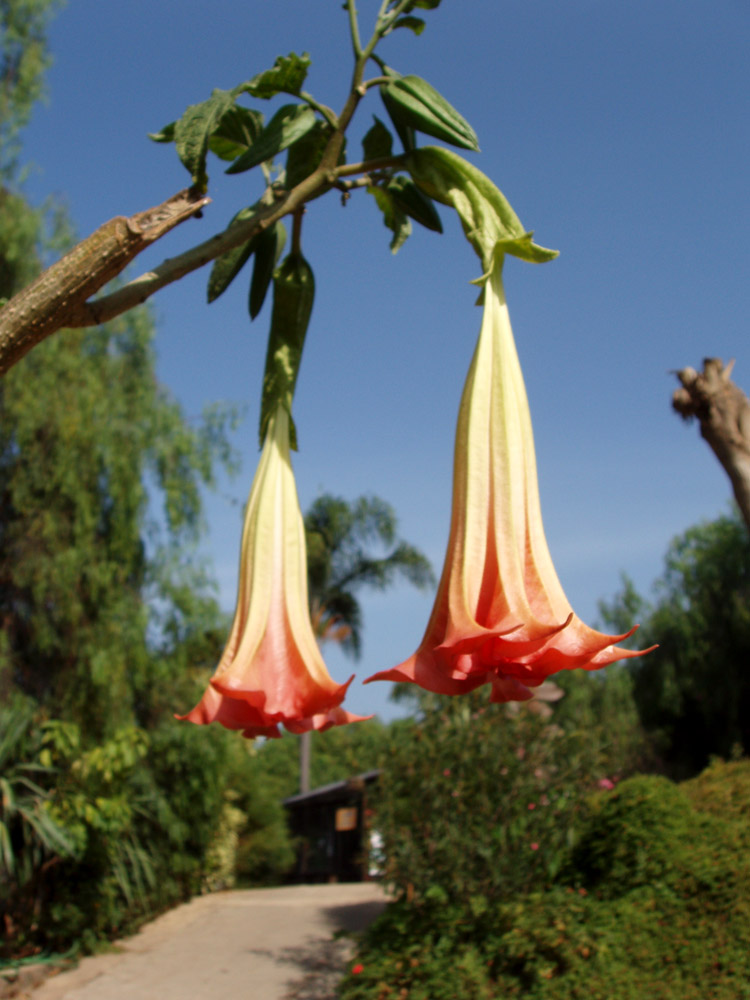
Native to South America, there are six species and more than a dozen different varieties of Brugmansia, all lethal if eaten in large enough quantities. They grow to a height of 3 ““ 5 metres and produce pendulous, trumpet-shaped flowers. The Brugmansia has powerful hallucinogenic and aphrodisiac qualities. Native peoples use the plant in infusions as a way of communicating with the ancestors and as an aid to prophecy, divination, witchcraft and medicine. The Chibcas (indigenous natives of Colombia) prepared Brugmansia, tobacco and maize beer drinks for the slaves and wives of dead kings to put them into a deep narcotic state so that they could be buried alive with their master. Nice.
Hibiscus/Rose of China (Hibiscus Rosa-Sinensis)
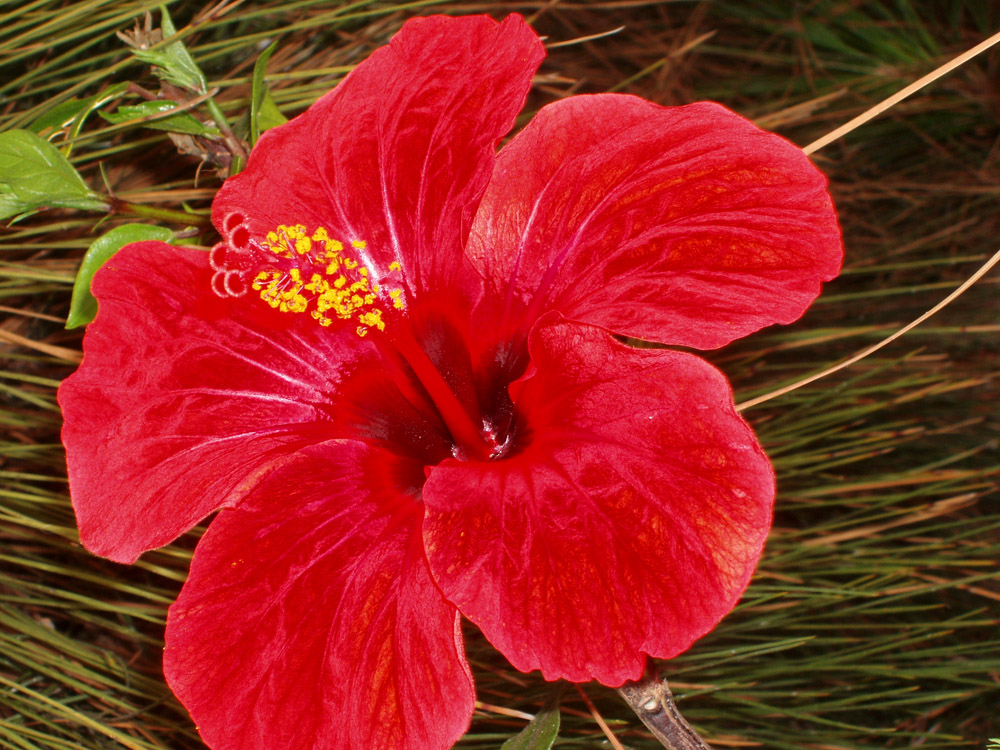 Originating in Asia and the Pacific Islands, Hibiscus Rosa-Sinensis is an evergreen shrub reaching up to 4 metres in height; there are more than 200 species of the plant and here in Tenerife it’s commonly grown as hedging. Hibiscus has medical properties and is used in Chinese and Western herbal medicines. The herb or extract can be applied externally to treat sunburn; the flowers are used for loss of appetite and Hibiscus tea has a gentle laxative effect. In some countries, the flowers are used as hair dye and for shining shoes.
Originating in Asia and the Pacific Islands, Hibiscus Rosa-Sinensis is an evergreen shrub reaching up to 4 metres in height; there are more than 200 species of the plant and here in Tenerife it’s commonly grown as hedging. Hibiscus has medical properties and is used in Chinese and Western herbal medicines. The herb or extract can be applied externally to treat sunburn; the flowers are used for loss of appetite and Hibiscus tea has a gentle laxative effect. In some countries, the flowers are used as hair dye and for shining shoes.
Bird of Paradise/ Crane Flower (Strelitzia Reginae)
No feature on exotic flowers of the Canary Islands would be complete without the Bird of Paradise. Cultivated for cut flowers, many of the Strelitzias seen gracing flower arrangements in hotel lobbys all over the island are cultivated in Tegueste, “˜the greenhouse of Tenerife’. Native to South Africa, the uniquely shaped, brilliant orange and blue flowers resemble the head of a bird of paradise. When the flower opens, two of the blue petals are joined together to form an arrow-like nectary; when birds sit to drink the nectar, the petals open to cover their feet in pollen.
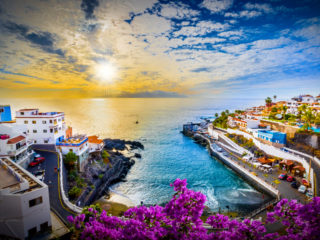
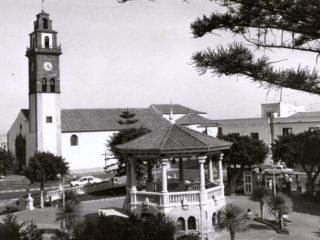
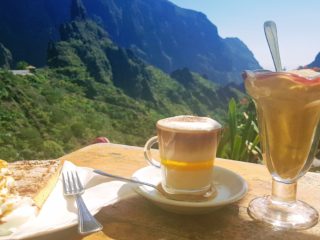


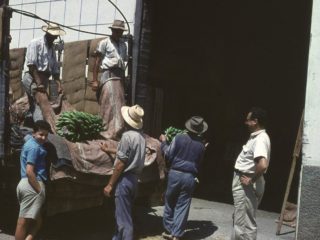
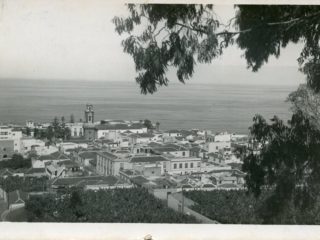
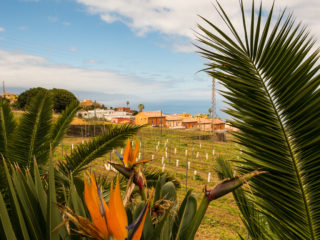
Comments are closed.